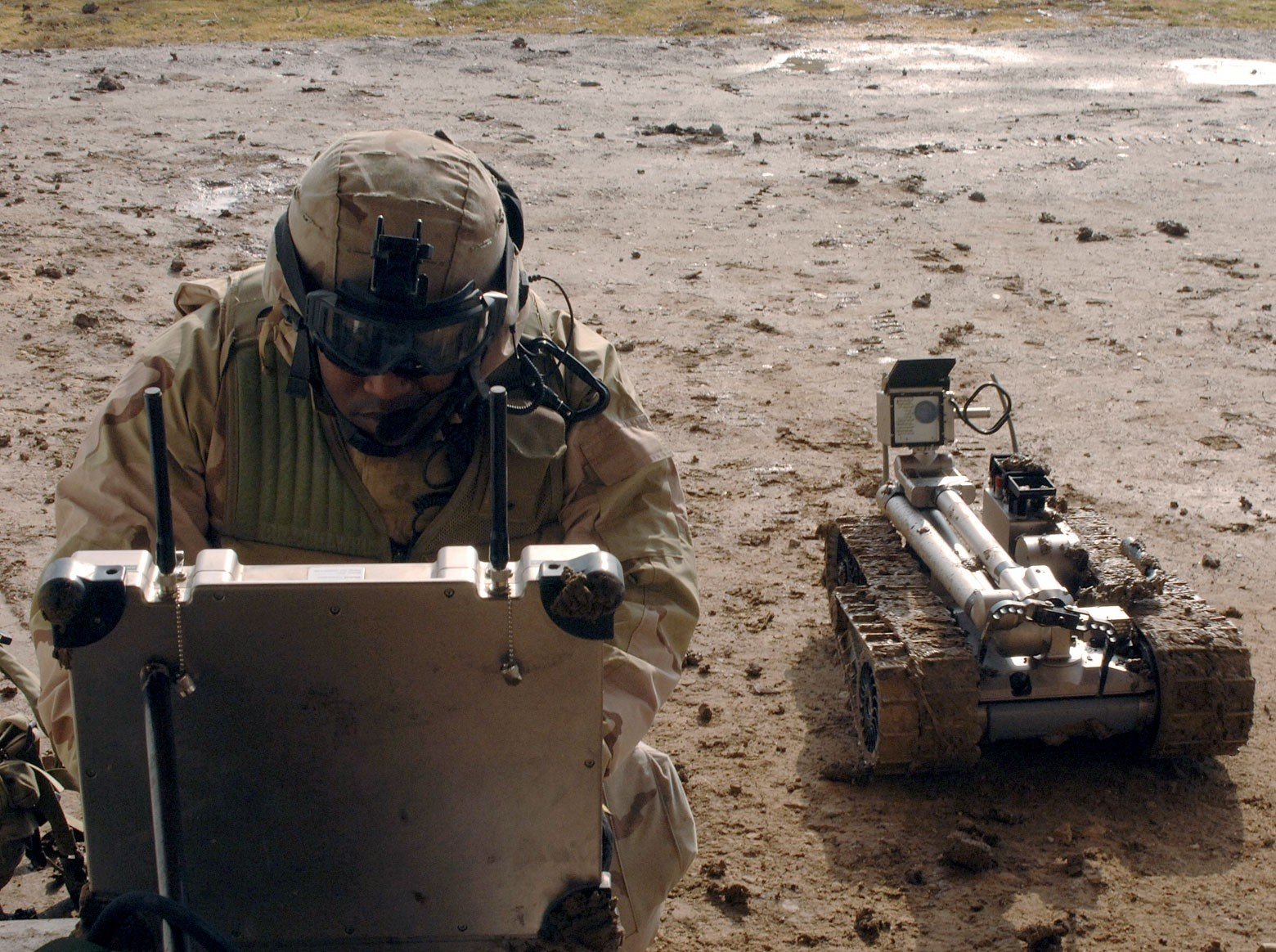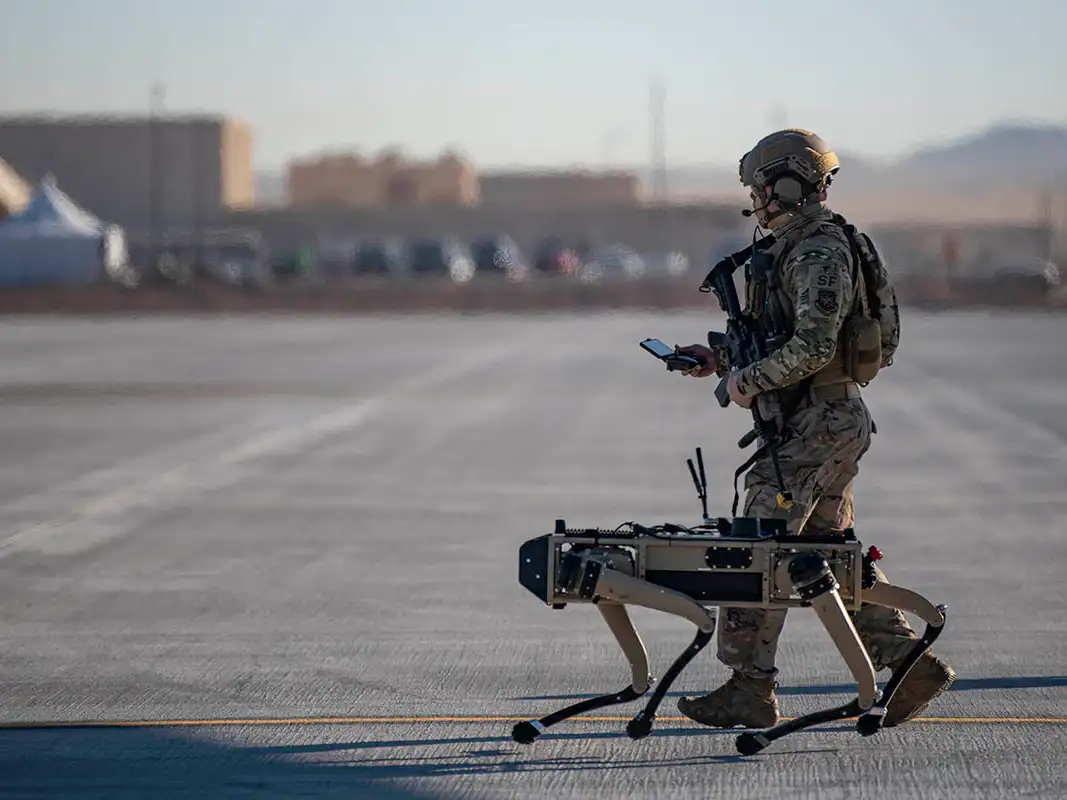
The military has always been on the cutting edge of technology. From the development of GPS to the use of drones, the military has always been at the forefront of technological innovation.
However, as technology continues to evolve at an ever-increasing pace, it can be difficult for the military to stay ahead of the curve. But thanks to emerging technologies, such as artificial intelligence (AI) and virtual reality (VR), the military can keep up with the latest advancements and even stay one step ahead of the enemy.
Today, you can witness the advancement in technology in almost every sector, whether for entertainment, such as www.online-casinos.ng, or for enhancing the quality of life through sustainable energy. The military has always been on the cutting edge of technology, and that is especially true today. This article will help you discover the new trends in technologies that are helping us keep safe and secure.

How the military is using AI and robotics
The military uses AI in several ways, such as for target recognition and identification, navigation, and even predicting enemy movements. Conversely, VR is used for training purposes, such as simulations and battle simulations.
AI and VR are helping the military stay ahead of the enemy by better understanding their surroundings and providing them with more accurate information. The military is using AI and robotics to help with various tasks. For example, they are using robots to help with bomb disposal, as well as to help with reconnaissance missions. They are also using AI to help with target identification and to help with navigation.
Mobile robots
These mobile robots are equipped with high-tech sensors and cameras to accomplish various duties efficiently and successfully while delivering vital video and photographs. The robotic arms are also employed to neutralize suspicious materials and bombs while causing no harm to human soldiers. These go on wheels or rails and are battery-powered, with an excellent communication system.
Surveillance robots
An efficient and reliable monitoring system is critical for this industry to improve citizens’ lives. Ground-based systems rely on surveillance robots outfitted with powerful weapons and high-resolution cameras. These infrared or night vision cameras aid in observing the entire military and defense facility and region without using soldiers.

How virtual reality is being used to train soldiers
Several mighty Armies around the globe, including the U.S Army, are now using virtual reality to train their soldiers for combat situations. The technology allows soldiers to experience what it’s like to be in a war zone without actually being in one.
The Army believes that this will help to prepare soldiers for the realities of combat better. In the past, training has been done using live-action role-playing and simulations, but virtual reality provides a more realistic experience.
Virtual reality training is not just for the Army; other military branches are also using it. The Navy, for example, is using virtual reality to train sailors for shipboard fires.
The use of virtual reality in training is not limited to the military; law enforcement and first responders are also using it. VR can be used to train police officers in how to handle active shooter situations and hostage situations. It can also be used to train firefighters in how to deal with fires in high-rise buildings.

The future of warfare: what will it look like?
It’s hard to say what the future of warfare will look like, as it largely depends on the technologies that will be available at the time. However, there are a few things that we can reasonably expect.
First, future wars will be fought with increasingly sophisticated weapons. This could include everything from energy weapons to nanotechnology. In addition, future wars will likely be fought with more intelligent and autonomous weapons systems. These systems will be able to make decisions on their own without human input.
Another thing we can expect is that future wars will be fought in more diverse environments. This could include everything from space to cyberspace. In addition, future wars will likely be fought against more unconventional opponents, such as terrorists and insurgents.
Finally, we can expect future wars to have a more significant impact on civilians. This is because more and more people are living in urban areas. As a result, future wars could cause massive amounts of damage to infrastructure and lead to significant civilian casualties.
Technologies like big data, robotics, and 3D printing are helping the military stay ahead of the enemy by giving them an edge in terms of information gathering and weaponry.
The military is also using these technologies to create new ways of training and preparing soldiers for battle. For example, the Army is using virtual reality to train soldiers for combat situations. The Marines are using 3D printing to create realistic models of enemy vehicles and terrain so that they can better prepare for battle. And the Navy is using robotics to create underwater drones that can be used to gather intelligence and conduct search-and-rescue missions.
These technologies are just a few examples of how the military is using technology to stay ahead of the enemy. By investing in new technologies, the military is ensuring that it has the tools it needs to win the fight.
ATTENTION READERS
We See The World From All Sides and Want YOU To Be Fully InformedIn fact, intentional disinformation is a disgraceful scourge in media today. So to assuage any possible errant incorrect information posted herein, we strongly encourage you to seek corroboration from other non-VT sources before forming an educated opinion.
About VT - Policies & Disclosures - Comment Policy




” Finally, we can expect future wars to have a more significant impact on civilians. This is because more and more people are living in urban areas. As a result, future wars could cause massive amounts of damage to infrastructure and lead to significant civilian casualties.” Does the writer mean like in WW II, Korea, Viet Nam and the Wars waged in the ME? Not much of an advance.
Playing catch-up to R&C in a lot of areas. We were too busy chasing “terrorists” and stealing gold and oil from Muslim Arabs to bother with hypersonics, zero signal stealth And wars with weak and backward countries. None of the aforementioned prepares us for war with thermonuclear peers. FIghting & preparing for exitential threats from peer powers is not much enhanded by our participation in this war in Ukraine being fought with artillery which is more like WWI &WWII
Is it just me or is VT running more of these blatant puff pieces these days ?
And who is “the enemy” ? It’s worth noting that US technological superiority hasn’t actually won any of the last several wars – not in geo-politically useful ways anyhow. Tho the US has demonstrated unexampled prowess at killing people and breaking things – in aid of god knows what.
why all cancel if I write a final of a masterpiece of Stanley Kubrik Full Metal Jacket?
https://www.youtube.com/watch?v=PmILOL55xP0
Or, We could have granted every Vietnamese citizen $44.000.00 1965 USD Credit to buy American industrial output and technological support to upgrade their Nation after the French had stripped their economy.
Just sayin’
#Aloha
Comments are closed.